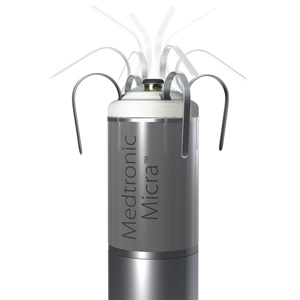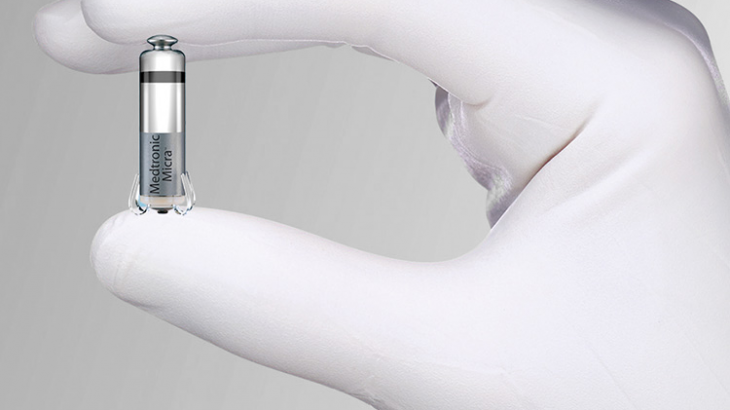Medtronic’s Micra™ Transcatheter Pacing System (TPS) has been titled as the world’s smallest pacemaker, succeeding its approval by the US Food and Drug Administration (FDA). The uniqueness of this device lies in its practicality and functional output as it is minimally invasive and can be implanted directly into the right ventricle of the patient’s heart, making the use of wire leads obsolete.
Micra is miniaturized to such an extent that it is 93% smaller than conventional pacemakers. It has been designed to eliminate pocket- and lead-related complications, which is why it was FDA approved for 1.5T or 3T MRI scans.
The clinical analysis, trials and studies resulted in 99.2% implant success rate, 0 dislodgements, 0 systemic infections in 725-patient global trial and instead proved to reduce complications by 51% in comparison with traditional pacemakers. In addition to this, its new ultra low-power circuit design delivers an estimated average 12-year battery longevity.

It was a medical milestone for Medtronic when US Food and Drug Administration (FDA) approved their Transcatheter Pacing System, Micra and made it the continent’s premier leadless pacemaker system. This announcement succeeding a punctilious deliberation of over two months conducted amongst an elected advisory board/panel to convene on its practical possibilities, potential hindrances and efficacy in the patient-care domain.
Needless to say, Micra is a path-breaking technology whose resonance will be resounded across the entire pacing therapy department. Its advent, however, occurs in a time where such devices can be deemed substandard when juxtaposed with other pacemakers (not leadless).
Although only Micra has received an official approval from FDA and is recognised as the world’s first leadless pacemaker system, its counterpart, Nanostim by St. Jude Medical, has also been approved in Europe. This makes the two devices competitors in the stream of pacing therapy.
The functionality of both these mechanisms is more or less identical. They are both induced in the patient by the means of a catheter through the right ventricle, as close to the apex as permissible. This facilitates single-chamber pacing without deploying a wire lead system which is customary for regular subcutaneously implanted pacemakers. Although these devices are standardised, they give way to predicaments like infection due to the implantation through the wire lead, thereby augmenting complications for the patient.
The Micra TPS Global Clinical Trial of 719 patients implanted with the device was vastly factored in before the approval announcement was made by FDA. The trial entailed over seven hundred patients, out of which, 98% of the patients had adequate pacing capture thresholds and only 4% experienced major complications associated with the device. That measured up to with a major complication rate of 7.4% (P=0.001) in a propensity score-matched historical control group of patients receiving standard pacemakers.
In accordance with the trial, Micra was also linked with 40% as many hospitalizations, an 88% fall in need for system revisions, and no incidents of pneumothorax or dislodgments from its anchor within the right ventricle.
FDA observed and opined that Micra is contraindicated for patients with other implanted cardiac devices that might impede its sensing performance and patients with femoral venous anatomy that won’t accommodate the 23 F introducer sheath.






